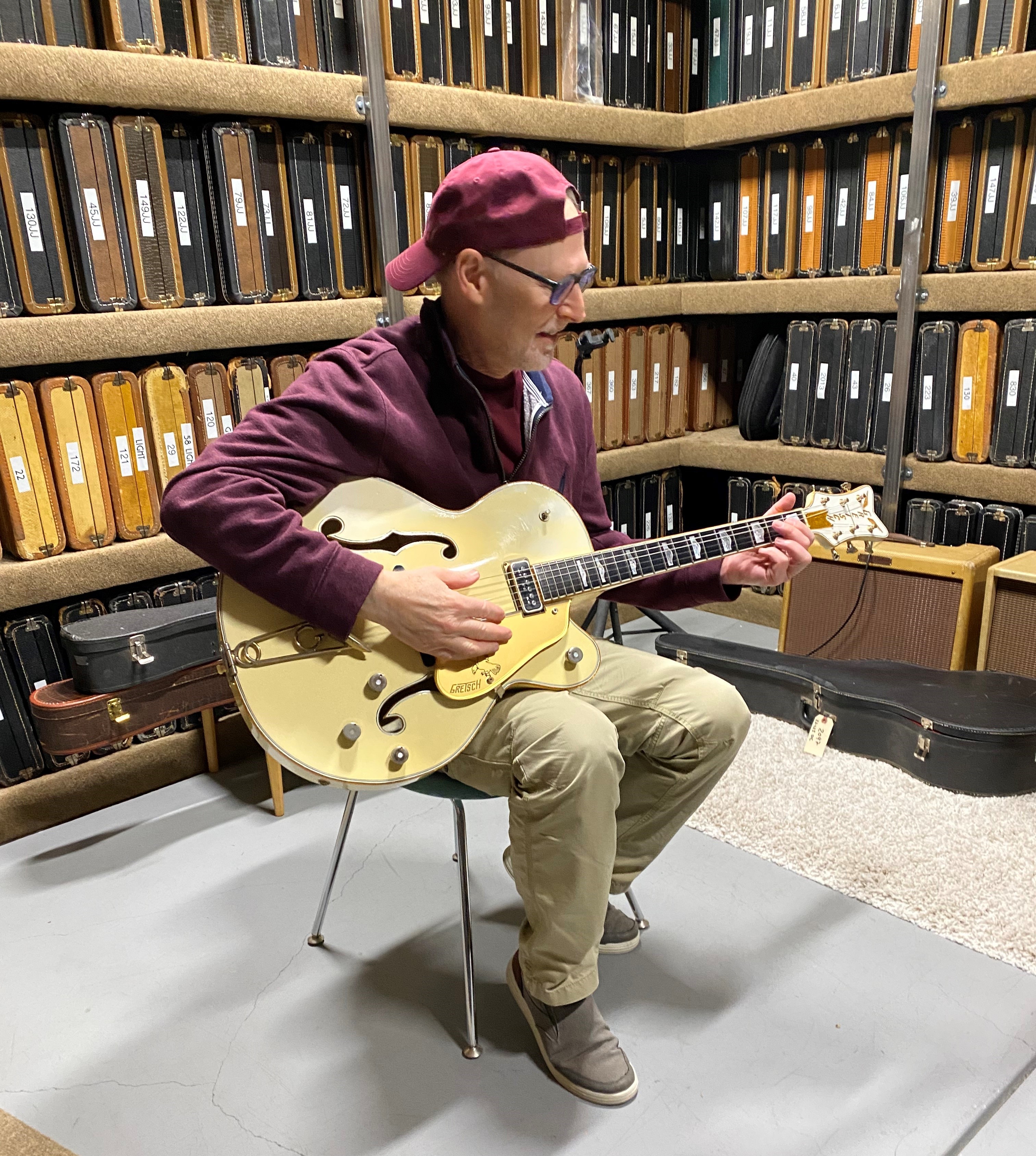
Living in mid-coast Maine, Paul had always enjoyed an active lifestyle and prided himself on staying healthy and focused on his work and his multiple passions, such as music, writing and his intellectual pursuits. But about a decade ago his body started giving him signals that something was not right.
Although his annual physicals included prostate screenings that showed normal results, Paul continued to experience progressive symptoms such as the sudden urge to urinate and difficulty with urinating. Despite several doctor visits and inconclusive tests, many years went by until one provider diagnosed Paul with benign prostatic hyperplasia (BPH). BPH is a common condition in older men in which the prostate grows larger in size; although non-cancerous, BPH can display similar symptoms to prostate cancer, oftentimes making it harder to diagnose the latter. The physician proposed a transurethral resection of the prostate (TURP), but at the urging of his wife, Paul decided to look for a different opinion. Despite his worsening symptoms, Paul was told by another urologist that his prostate specific antigen (PSA) levels were in a healthy range. Normally, a PSA level above 4 ng/mL would indicate the potential presence of prostate cancer, but Paul’s highest PSA reading was only 0.86 ng/mL, far below the threshold that typically raises alarm. Unconvinced, Paul sought yet another opinion, and in June 2021 the physician raised the first red flag after performing a digital rectal exam.
The prostate MRI and subsequent biopsy showed high-grade, Gleason 10, Stage 4 prostate cancer. The cancer had spread locally and regionally, invading his seminal vesicles, compressing his bladder and rectum, and spreading to multiple lymph nodes in the pelvis. His next step was clear: he needed the best care possible, even if he had to travel for it. This led him to Dana-Farber Brigham Cancer Center, a decision shaped by the reputation of its exceptional care in oncology, “I wasn't considering difficulty in where to go as much as where's the best place that I can go,” said Paul.
In September 2021, Paul met Anthony D’Amico MD, PhD, Chief of Genitourinary Radiation Oncology at Dana-Farber Brigham Cancer Center, and Eleanor Theresa Walters Distinguished Chair in Radiation Oncology, and Xiao Wei, MD, MAS, a medical oncologist and Deputy Director of Clinical Research at the Lank Center for Genitourinary Oncology. When Paul arrived at his consultations, Dr. D’Amico and Dr. Wei were well-prepared and set in motion a thoughtful and coordinated treatment plan.
Since the cancer had metastasized, surgery was no longer an option. Dr. D’Amico and Dr. Wei initially recommended a multi-pronged approach that fights the cancer from different angles, combining androgen deprivation therapy (ADT), which would dramatically lower his testosterone levels, abiraterone acetate (a hormone pill which further starves the cancer from testosterone), and radiation therapy targeting the prostate and pelvic lymph nodes. Due to concern that Paul’s low-PSA-secreting prostate cancer may be less responsive to hormonal therapy, chemotherapy (docetaxel) was considered to be added after radiation.
Dr. Wei also sent Paul’s prostate tumor biopsy for genomic sequencing to better understand his cancer biology. This test revealed that Paul’s cancer had an extremely rare genetic finding called “microsatellite instability-high (MSI-H)” or “mismatch repair-deficiency (dMMR)”. MSI-H or dMMR is present in only approximately 3% of prostate cancers. They have a defect in the ability to correct mistakes that occur when DNA is copied in the cell. Because of this, MSI-H or dMMR tumors have high mutation burdens which allow them to be easily recognizable by the immune system. This leads to high rates of durable responses, as well as high survival rates when MSI-H or dMMR cancers are treated with immunotherapy across cancer types. Armed with this information, Paul’s treatment plan was personalized to replace traditional docetaxel chemotherapy with pembrolizumab immunotherapy, a type of immunotherapy that blocks the PD-1 pathway and prevents cancer cells from hiding from the immune system.
For the first time, Paul was presented with hard numbers regarding his survival rate, and while the odds weren’t perfect, they were better than expected. By addressing the cancer through different treatments, his chances of survival jumped to 80 percent. For Paul, who “hates to lose, or just likes to win,” as his wife has said of him, those numbers were something he could work with.
Paul then embarked on a long treatment journey: two months of radiation, two years of hormonal therapy, and two years of immunotherapy. As Paul underwent treatment, the effects were both physically and emotionally challenging. The hormonal therapy reduced his testosterone levels from 278 ng/dL to just 3 ng/dL, and it wasn’t just his body that felt the toll, “It basically shuts down almost all passion about everything,” Paul explained. “It isn’t just physical; it’s emotional, too. Interests and emotions get shut down.” But Paul never succumbed to despair. “I never thought this would fail,” he said. “If something went wrong, I would adjust, and we’d deal with it. But I never went into this thinking, ‘Oh my God, it’s cancer.’ I believed in the process and the people.”
Today, six months after completing all his treatments, Paul is in remission, having beat incredible odds; a true testament of his fortitude and his ability to advocate for himself, and of his cancer team’s expertise in treating complex and rare types of cancers.
“Pauls’ journey is a testament to how partnership between patients and their oncology providers, perseverance through treatment, thinking outside of the box and finding a needle in the haystack, can really make a difference,” said Dr. Wei.
Although the cancer could return at any time, regular scans and tests continue, but thanks to his proactive approach to treatment, he continues to be one step ahead of the disease. And his care team could not be happier about that.
“It is a privilege and a joy to care for and continue to follow Paul, and I am thrilled to see how well he has responded to the prostate cancer treatment,” said Dr. D’Amico.
Gradually, Paul’s interests and passions have begun to resurge, along with normalization of his testosterone level after treatment. Looking back on his experience, he impressed upon the importance of cancer screenings and for people to advocate for themselves as patients. “In our support group it is astounding how many men have not had these exams. I want people to understand that regular exams that include prostate cancer screenings are imperative and that concerning or persistent symptoms need referral to a specialist. And to never stop seeking answers,” he emphasized.

Paul playing the guitar (above), Paul kayaking (below).
For over a century, a leader in patient care, medical education and research, with expertise in virtually every specialty of medicine and surgery.
About BWH